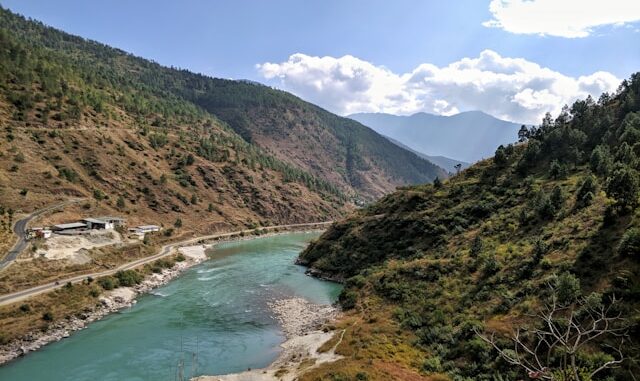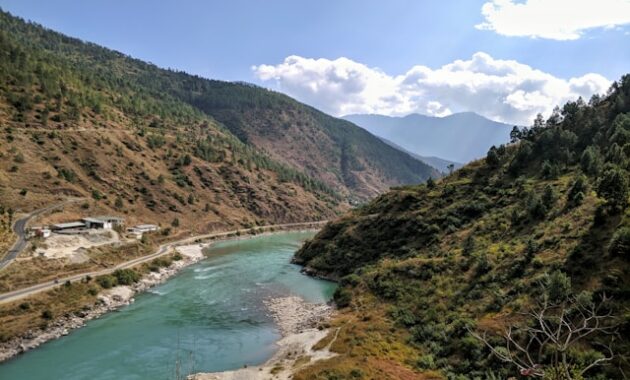
Nestled between the towering peaks of the Himalayas, Bhutan is a sanctuary of unspoiled natural beauty, rich biodiversity, and sacred cultural landscapes. This small, landlocked kingdom has committed itself to environmental preservation with unwavering dedication. Over 70% of its land area is covered by forests, and its constitution mandates maintaining a minimum of 60% forest cover at all times. At the heart of this commitment lie its breathtaking national parks, which together form one of the most pristine and biologically diverse ecosystems in the world.
Royal Manas National Park: The Crown Jewel of Bhutan’s Wilderness
As Bhutan’s oldest and most biologically diverse protected area, Royal Manas National Park is often referred to as the “conservation showpiece of the Eastern Himalayas.” Spread across over 1,057 square kilometers, the park links with India’s Manas Tiger Reserve, forming a critical transboundary conservation area.
Key Highlights:
- Home to endangered species like the Bengal tiger, one-horned rhinoceros, clouded leopard, and Asian elephant.
- Over 900 species of vascular plants, including medicinal herbs and rare orchids.
- Rich in birdlife, with over 426 recorded species, including hornbills and rufous-necked hornbills.
This park is not just a biodiversity hotspot but also a spiritual realm for Bhutanese communities who revere it as sacred ground.
Jigme Dorji National Park: The Park of the Snow Leopard
Covering nearly 4,349 square kilometers, Jigme Dorji National Park is Bhutan’s second-largest protected area. It stretches across the western districts of Paro, Thimphu, Gasa, and Punakha, offering a dramatic transition from subtropical forests to alpine meadows.
Notable Features:
- Habitat of the elusive snow leopard, Himalayan blue sheep, takin, red panda, and musk deer.
- The park houses numerous glaciers, making it a vital source of freshwater rivers like the Mo Chhu and Pho Chhu.
- Home to sacred peaks like Jomolhari, Jichu Drake, and Tsherimgang, revered in Bhutanese culture.
This park uniquely integrates conservation and human habitation, with over 6,500 people residing within its boundaries in harmony with nature.
Phrumsengla National Park: Bhutan’s Highland Haven
Located in central Bhutan, Phrumsengla National Park spans approximately 905 square kilometers, encompassing some of the country’s most beautiful landscapes, including forests, alpine meadows, and snow-covered passes.
Why Visit Phrumsengla?
- Its remote highland terrain offers sightings of the rare red panda, yellow-throated marten, and Asiatic black bear.
- Boasts some of Bhutan’s highest motorable roads, providing panoramic views of peaks like Gangkhar Puensum—the world’s highest unclimbed mountain.
- Home to more than 620 plant species and 341 species of birds, including satyr tragopan and blood pheasant.
Phrumsengla’s high-altitude wilderness provides one of the most undisturbed habitats in Bhutan’s central belt.
Jigme Singye Wangchuck National Park: A Corridor of Life

Named in honor of Bhutan’s beloved fourth king, Jigme Singye Wangchuck National Park covers around 1,730 square kilometers, encompassing ecosystems from warm broadleaf forests to alpine meadows.
Ecological and Cultural Value:
- Contains diverse vegetation zones, supporting tigers, leopards, golden langurs, and giant squirrels.
- Acts as a wildlife corridor connecting several other protected areas, allowing for gene flow and migration of species.
- Rich in cultural heritage, with monasteries like Nabji and Korphu nestled within its boundaries.
The park is also known for its eco-tourism initiatives, which empower local communities while promoting sustainable travel.
Bumdeling Wildlife Sanctuary: The Realm of the Black-Necked Crane
Located in northeastern Bhutan, Bumdeling Wildlife Sanctuary covers 1,520 square kilometers and is internationally recognized for hosting the endangered black-necked cranes that migrate from Tibet each winter.
Unique Attributes:
- The Bumdeling Valley offers ideal wintering grounds for cranes.
- More than 300 species of birds have been recorded, including the Himalayan monal and the white-tailed nuthatch.
- Shelters rare mammals such as the Himalayan musk deer and Chinese pangolin.
In addition to its ecological importance, the sanctuary supports traditional Bhutanese lifestyles, with locals continuing age-old farming and weaving practices.
Sakteng Wildlife Sanctuary: Bhutan’s Mystical Frontier
Spanning 740 square kilometers in eastern Bhutan, Sakteng Wildlife Sanctuary protects the unique eastern Himalayan ecosystems and preserves the cultural identity of the Brokpa people, semi-nomadic yak herders.
Features of Sakteng:
- Encompasses temperate forests, alpine meadows, and deep river valleys.
- One of the few places in Bhutan where Eastern Blue Pine thrives alongside rhododendron forests.
- Mythically significant as the rumored habitat of the Yeti (Migoi), lending the park a mystical allure.
This sanctuary is critical for the conservation of endangered species such as the Himalayan red panda, Himalayan serow, and capped langur.
Connecting the Parks: Bhutan’s Biological Corridor Network
To ensure ecological continuity, Bhutan has established a Biological Corridor Network (BCN)—a groundbreaking initiative that links all national parks and sanctuaries, allowing wildlife to migrate freely and ecosystems to remain resilient against climate change.
Key Points About the BCN:
- Comprises eight corridors covering 9.5% of Bhutan’s total land.
- Functions as a living landscape, facilitating movement of keystone species like tigers and elephants.
- Serves as a global model for integrated conservation and sustainable development.
This network strengthens Bhutan’s commitment to its “High Value, Low Impact” tourism philosophy and its pioneering stance on carbon negativity.
Sustainable Tourism in Bhutan’s National Parks
Bhutan’s national parks offer some of the world’s most exclusive and immersive eco-tourism experiences. Activities such as trekking, birdwatching, cultural tours, and wildlife safaris are carefully regulated to preserve the environment while offering deep engagement with nature.
Tourism Strategies Include:
- Community-based eco-lodges and guided treks that benefit local populations.
- Strict visitor caps and sustainable infrastructure to limit environmental degradation.
- High daily tariff policy to attract environmentally conscious travelers.
These parks are more than destinations—they are living symbols of Bhutan’s harmony between people and nature.
Conclusion: Bhutan, A Beacon of Conservation Excellence
Bhutan’s national parks are not just protected areas—they are living, breathing ecosystems that embody the country’s spiritual, ecological, and cultural values. From the remote highlands of Phrumsengla to the sacred forests of Royal Manas, each park tells a story of resilience, reverence, and responsibility. In an era of environmental crisis, Bhutan offers a model of conservation that the world can learn from.